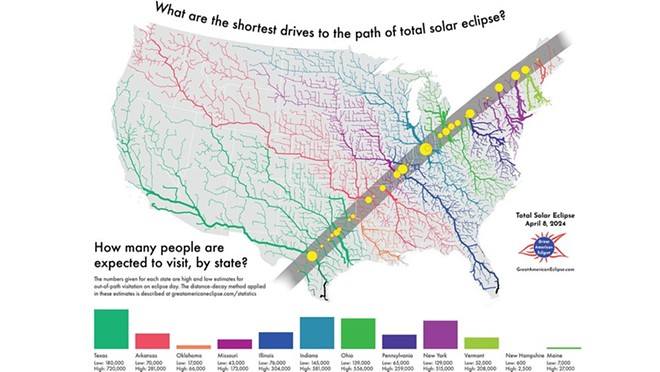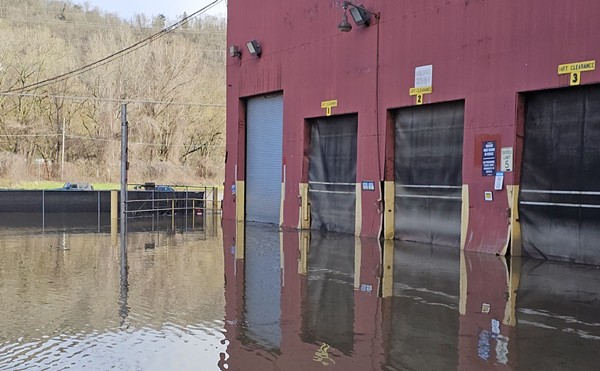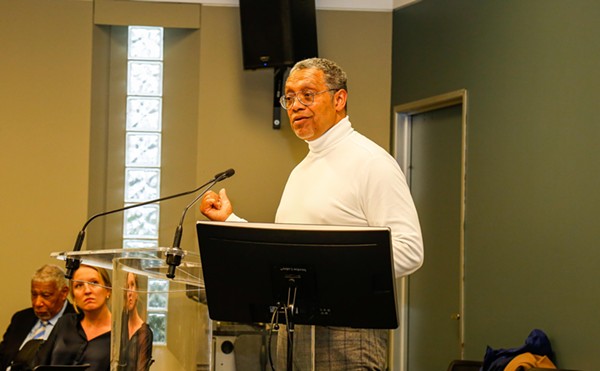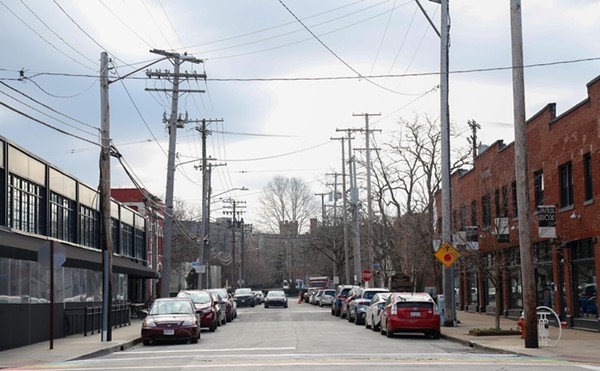How Many Eclipse Tourists Will Descend on Northeast Ohio in April 2024?
Lorain County is preparing for almost a million people
By Maria Elena Scott on Thu, Mar 30, 2023 at 8:51 am
[
{
"name": "Ad - NativeInline - Injected",
"component": "38482495",
"insertPoint": "3",
"requiredCountToDisplay": "5"
},{
"name": "Real 1 Player (r2) - Inline",
"component": "38482494",
"insertPoint": "2/3",
"requiredCountToDisplay": "9"
}
]
Almost exactly a year out, organizers are preparing for the total solar eclipse much of Ohio will experience on April 8, 2024. The last solar eclipse the state saw in totality was in 1806, and the next one won’t come until 2099, making this a once-in-a-lifetime occasion for the state.
How many people are going to make the trip to view it here? That depends on who you ask.
A total solar eclipse happens when the Moon passes between the Earth and the Sun, blocking the Sun completely and covering Earth with its shadow.
The path of totality, or the area where the total eclipse can be viewed, is expected to be roughly 124 miles wide, larger than most eclipses, and span Texas to Maine in the U.S.
The point of longest duration in Ohio will be Avon Lake, in Lorain County, which is preparing for a huge influx.
Garry Gibbs, director of the Lorain County Visitors Bureau, says he expects upwards of 900,000 tourists for the eclipse and hopes people will stay for several days.
Destination Cleveland told Scene it didn't have its own estimate, deferring to Great American Eclipse numbers, which pegs Ohio's total incoming visitors between 139,000 and 556,000.
Regardless, Ohio is within a one-day drive for 70% of the U.S. population, according to the Ohio Emergency Management Agency (EMA), making it a prime 2024 eclipse destination.
Tourist numbers from the 2017 eclipse vary. South Carolina estimated that 1.6 million people visited for the celestial show. Hopkinsville, Kentucky, which made a whole to-do and branded itself as Eclipseville that year, saw 100,000 visitors.
In addition to viewing the eclipse, EMA compiled a list of attractions and events available to visit near the path of the eclipse, which can be explored on an interactive map.
As with any solar eclipse, viewers need to protect their eyes.
“The only safe way to look directly at a partially eclipsed sun is through special-purpose solar filters, such as eclipse glasses or hand-held solar viewers,” according to EMA. “Homemade filters or ordinary sunglasses, even very dark ones, are not safe for looking at the sun. They transmit thousands of times too much sunlight and could damage the eyes.”
More information about finding reputable vendors, the path of the eclipse and where to view it can be found here.
Coming soon: Cleveland Scene Daily newsletter. We’ll send you a handful of interesting Cleveland stories every morning. Subscribe now to not miss a thing.
Follow us: Google News | NewsBreak | Instagram | Facebook | Twitter
SCENE Supporters make it possible to tell the Cleveland stories you won’t find elsewhere.
Become a supporter today.
Scroll to read more Ohio News articles
Newsletters
Join Cleveland Scene Newsletters
Subscribe now to get the latest news delivered right to your inbox.












